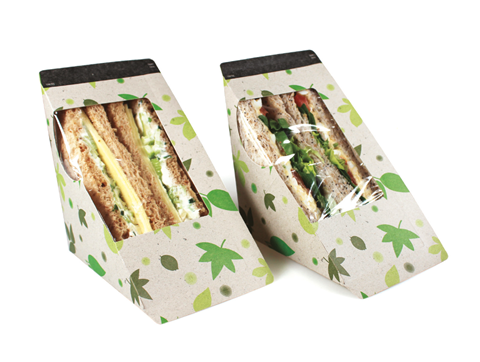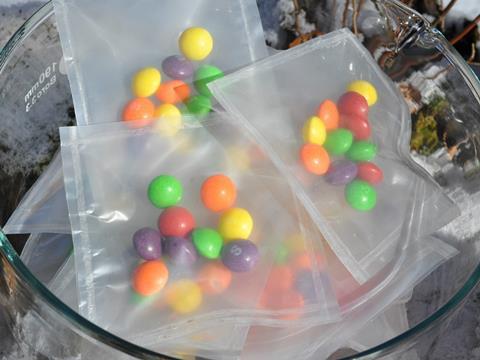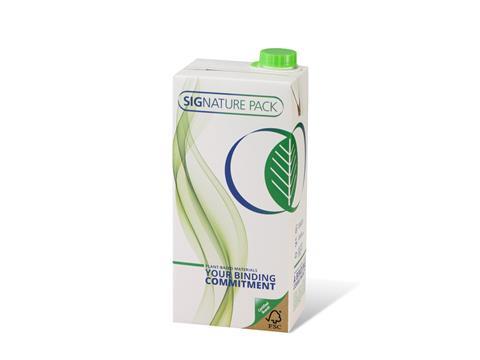Announcing the finalists of the Sustainability Awards 2018! The seventeen independent judges for the leading competition for innovation in sustainable packaging have graded all the submissions over the summer – and this week Packaging Europe is revealing the top four entries in each category. The six category winners and overall Sustainability Awards 2018 winner will be unveiled at Scanpack on 23 October.
Here (in alphabetical order) are the four finalists in the ‘Bio-Based’ category, which celebrates the development or innovative use of bio-based materials with significant positive potential in packaging applications:
Finalist A:
AgriRAP - submitted by Rapid Action Packaging Ltd
Overview
The AgriRAP sandwich-wedge comes from RAP, campaigning on ‘Removing-Avoidable-Plastics’ in the food packaging industry. This is a fully-bio-based, home-compostable and widely-recyclable solution, consisting of a high-quality paper-board made from agricultural waste deriving from stems and leaves left behind after harvest. These crops include wheat, rice, corn and sugarcane, where only 20% of the plant is used for food. RAP uses the remaining 80% of the fibres to convert into board. To enable visibility on the packaged food, protect it and keep it fresh for longer, this board is laminated to a biofilm made of wood pulp from managed plantations. The film is also compostable in both industrial and home composting environments, as well as suitable for anaerobic-digestion and marine biodegradation.

While the whole pack can be composted, only the cardboard element of this sandwich packaging can easily be recycled. Having been involved in conversations with processors, RAP understands they were having difficulty separating the cardboard and film parts of the pack. With this in mind it redesigned the concept of sandwich-wedges. Through a peelable tab, consumers can easily remove the film from the cardboard and if they throw the whole pack away, processors are now able to separate the board element from the film.
This ensures that, depending on what bins are available, the pack will be easily recyclable in any usual paperboard waste stream at end-of-life, without the need for difficult and expensive plastic separation. If it ends up in a composting bin at home, it will break down into water and biomass in less than one year.
Impact
In order to feed the seven billion people on this earth, crops such as rice, grains, corn, and sugar cane are grown worldwide. The stems and leaves that are left over after the harvest, when the food has been removed from the plant, is referred to as agricultural waste. Approximately 80% of the crops consist of such agricultural waste, whereas only 20% is used for food. Agricultural waste is mainly burned and, in the most positive case, used as alternative source of energy. Conversion into packaging materials gives a second life to this waste.
Using this board provides an environmental saving of 47% compared to FSC paper based on wood fibres, and 29% compared to recycled paper (source: LCA quickscan conducted by IVAM University of Amsterdam). The agricultural waste is made available annually and prevents millions of hectares of deforestation by using it as raw material for paper and cardboard. With a mere 1.8% of the annually available agricultural waste worldwide, it would be possible to produce all the paper and cardboard used in Europe per year.
Finalist B:
Cellulose-based packaging substrate - submitted by VTT Technical Research Centre of Finland Ltd
Overview
VTT Technical Research Centre of Finland Ltd has created a compostable three-layered material solution that looks and performs like plastic, but does not pollute the environment and oceans like regular plastic as it is made from nature’s very own raw material - cellulose. The compostable multilayer material is ideal for packaging dry food products like cereal and nuts, and flexible packaging air-sensitive products like chocolate, biscuits, thin cuts of meat or cheese, and potentially some liquids and moist food. It is ideal because of the material’s good barrier properties against gases, grease, mineral oils and moisture, which are essential properties for food packages.

The multi-layer packaging solution is built from two different cellulose-based transparent films that have complementary barrier properties and that essentially make the solution a monomaterial. The solution is processable with existing film and roll-to-roll manufacturing machines and processes. The films are processed in a way that does not introduce any unwanted or toxic chemicals.
VTT´s bio-based solution is built upon decades of research, experience and know-how on lignocellulosic (biomass) raw materials. These materials are very suitable for packaging and are already widely used in cardboard. As there are no well functioning bio-based materials with good barrier properties available in the food packaging market, VTT started to investigate the potential of cellulose for this purpose.
Impact
The VTT solution provides an environmentally benign alternative for multi-layered plastic packaging (EVOH, nylon barriers). Cellulosic materials are safe, renewable, recyclable, biocompatible and biodegradable. As a renewable resource, cellulose-based materials have a lower negative environmental impact than fossil-based materials. The VTT solution can be produced locally and efficiently from multiple cellulose-based raw materials (with a maximum lignin content of 10%). The processing is energy efficient and existing machinery of pulp and paper industry with minor modifications can be used. The final barrier film products do not include any unwanted or toxic substances. The fully bio-based three-layer structure has better technical properties than the best currently available bioplastics (PLA, PHA, cellophane, starch).
The conversion yield of the nanocellulose is very high (90%).The soluble sugars from washing filtrate can be recovered and reused in food/feed and chemical applications. The conversion yield of molar mass adjustment is 95%, followed by esterification to produce thermoplastic cellulose at the yield of approximately 33% for optimum properties. The yields and efficiency of the materials can be further optimised.
The VTT solution can be recycled and industrially composted. The compostability of the nanocellulose has been evaluated according to EN13432 and EN14046 tests and it disintegrates completely in the course of three weeks. No signs of acute toxicity were detected. Compostability of the thermoplastic cellulose can be still be further improved. The advantages of VTT solution are the use of abundant, sustainable and renewable raw material and excellent performance properties that lead to long shelf life and decreased food losses.
Finalist C:
SIGNATURE PACK - submitted by SIG Combibloc
Overview
SIGNATURE PACK is a world first aseptic pack 100% linked to plant-based renewable material. Net Positive: aiming to contribute more to the environment and society than it takes out – that’s SIG’s big ambition. The company has the responsibility to ensure a sustainable future for the next generations. One of its goals is to improve the materials in its packaging. Fossil-based resources are finite. The extraction and processing of these negatively affect the planet. This is why SIG developed SIGNATURE PACK.

SIG’s carton packs contain up to 82% paperboard from renewable wood sources. What’s different are the plastics in SIGNATURE PACK. They’re now linked to a plant-based material (tall oil) via mass balance systems.
Impact
The raw material for the feedstock is tall oil – a waste by-product from the paper industry.This provided SIG with the opportunity to decouple from fossil resource consumption and switch to a renewable feedstock basis. The renewable feedstock in this case can be regrown as it is from trees from sustainable European forestry.
The mass balance plastics are certified under recognised certification schemes: ISCC Plus and TÜV SÜD CMS71, which allows for traceability.
SIG understands the criticalities around food crop usage, animal feedstock basis, land use effects, etc. It also understands limitations of small-scale bioplastic productions. Such are connected to a single biomass feedstock source and provide single or small variation in plastic grade output. Together with its polymer suppliers, SIG therefore created a sustainable solution by using a residue / by-product from the paper-making process. This fosters the transition from a petroleum plastic industry towards a bio one, while not affecting staple food crops.
With SIGNATURE PACK, SIG is now able to offer a packaging solution that answers to industry needs, and to the growing environmentally-conscious consumers.
Finalist D:
Sustainable Feedstock for Bio-based LDPE Production - submitted by Dow Europe GmbH
Overview
In an effort to advance the circular economy as per its 2025 sustainability goals, Dow is working with partners to help find and test alternatives to fossil fuels in the production of plastic packaging. The result is a bio-based LDPE solution using renewable feedstock that is produced by converting bio-based naphtha in Dow’s cracker into bio-based LDPE.
In a specific pioneering project, Dow worked together with UPM and Elopak to convert tall-oil based feedstocks into bioplastics for beverage cartons. The sustainability of the entire production process has been verified with the renowned ISCC PLUS certification (International Sustainability and Carbon Certification) in September 2017. To obtain this certification, Dow entered into an agreement with UPM, the producer of bio-naphtha out of tall oil – a waste product from wood processing industry. Tall oil does not interfere with the food chain which has been an important selection criterion for Elopak. For each kilo of packaging material, one kilo of renewable feedstock needs to be credited to the system, and the balances of each partner in the supply chain are audited once per year.
Apart from beverage cartons, other potential applications could be collation shrink films or several packaging layers – all ideas are currently in discussion with customers. In order to help customers accelerate their own agenda towards a circular economy, Dow is offering this certified solution to meet the market demand for more sustainable packaging solutions based on renewable feedstocks.
Impact
The major environmental advantages are that fossil fuel is conserved because every ton of the bio-based naphtha that Dow converts into bioplastics reduces one ton of fossil raw materials used.
An additional positive sustainability aspect is that by using a bi-product from wood production in the example mentioned, a usual production waste is turned into and reused for something valuable.
Want to be the first to know the winners of the Sustainability Awards 2018? You’re welcome to join us at the Awards ceremony and the Sustainable Packaging Summit at Scanpack in Gothenburg on 23 October 2018. Contact Packaging Europe by email or Twitter for details.

















